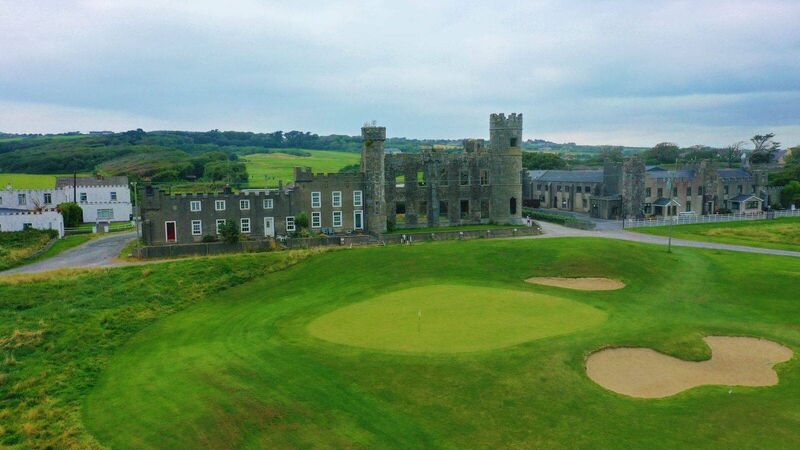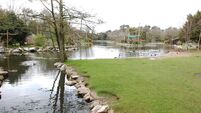Tourist apartments given go-ahead in grounds of historic Kerry castle despite objections

In an appeal to An Coimisiún Pleanála, third-party appellants said the proposed design had the 'potential to materially affect the character, setting and landscape of Ballyheigue Castle'.
Short-term tourist accommodation has been given the go-ahead within the curtilage of the ruins of Ballyheigue Castle in Co Kerry — despite a number of objections.
The castle, which dates to the 18th century, was the seat of the Crosbie family, and also acted as a gaol and an RIC barracks.
The castle was burned during the War of Independence but its facade remains. It is now surrounded by a golf course.
The objections and appeal to An Coimisiún Pleanála centred on the status of the protected monument, planning history, traffic and parking.
The planning inspector had also recommended refusal, noting the proposals would impact the historic garden walls, and parking would lead to clutter.
However, the proposed design and form of the development will not detract from, or seriously damage, the setting of Ballyheigue Castle, the board said, rejecting its planning inspector’s advice.
In March, Kerry County Council had given HRP Construction Limited permission for the construction of seven short-term tourist accommodation apartments.
Planning permission included the construction of a single storey extension consisting of 24sq m, as well as some minor internal and external demolition to the existing structures.
In an appeal to An Coimisiún Pleanála, third-party appellants said the proposed design had the "potential to materially affect the character, setting and landscape of Ballyheigue Castle".
"Archaeological sites such as this are of national significance, and developments within or adjacent to them should be subject to rigorous consultation with statutory bodies."
The planning inspector noted proposals incorporated a number of openings along the historic garden walls. It was her opinion the historic garden walls “should be retained in full", with little intervention.
Several conditions relating to the castle’s architectural and archaeological value have been attached to the permission.
Should archaeological remains be identified during the course of monitoring, all works shall cease in the area.





